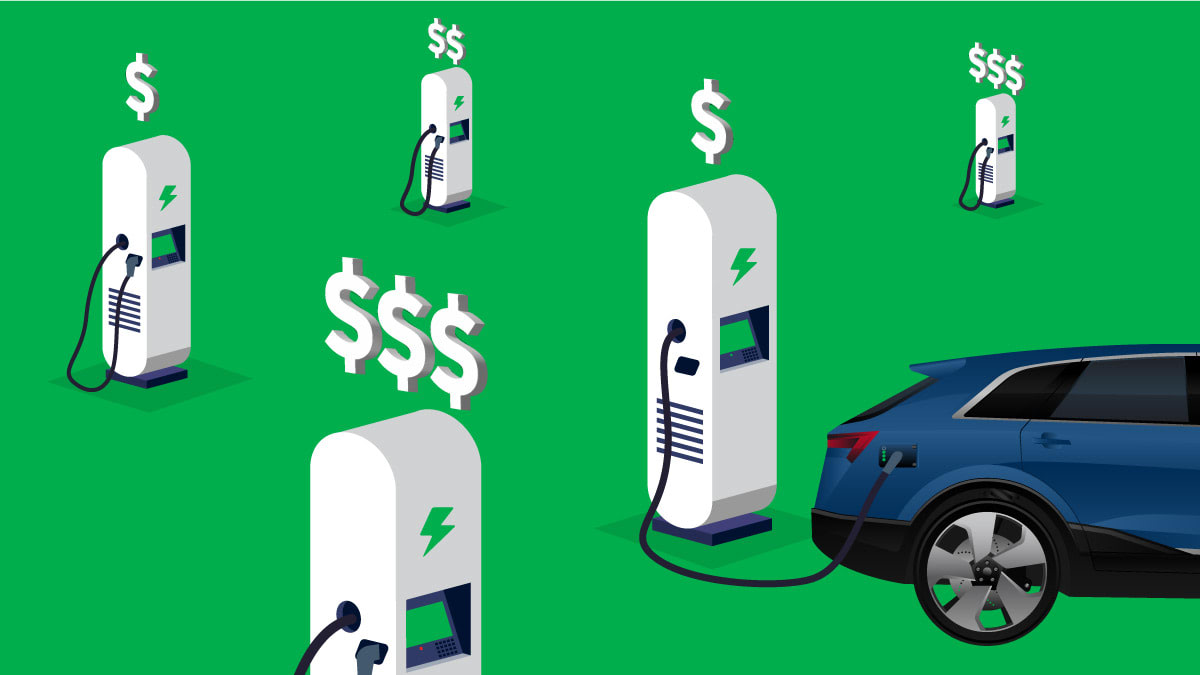If you’re considering buying an EV, CR’s EV buying guide is a comprehensive resource. Among other things, it can help you calculate the cost of charging a vehicle at home and away based on the type of charger you use and the kWh electricity rate. But when home charging isn’t an option, here are some additional tips to make the process more convenient and less costly.
Use apps to find charging stations and shop based on price. Each of the charging networks has an app that helps you find in-network chargers compatible with the type of charging connector you need, information you provide when you sign up to use them. Many will also tell you if the charger is currently being used and will let you pay for the session through the app. (In some cases, you can also pay with a credit card or mobile wallet at the station itself.) With the Blink mobile app, for instance, you can search for charging stations by ZIP code or address, see their availability, and, once you’re hooked up, receive live updates about your vehicle’s percentage of battery charge.
ChargeHub and PlugShare, apps unaffiliated with any charging network, can help you find chargers across networks by location, providing cost estimates.
Google Maps also has a tool to help you find EV chargers. In Google Maps, tap your profile icon in the search bar and select settings, scroll down and select “electric vehicle settings,” then choose your vehicle’s connector type. Maps will then share the location of chargers compatible with your vehicle.
Find free charging: At least one major retailer, Macy’s, offers free Level 2 charging as an amenity in the parking lots of some of its locations. You can also find free chargers at Cinemark movie theaters and at some parking garages (though you may have to pay to park). The apps of at least two charging networks also have filters to help you find chargers in their networks that are free to use.
Become a member. Several of the companies that make and maintain chargers offer subscription services that allow you to pay a monthly fee for discounted use of chargers in their network. For example, for a $7-a-month subscription, Electrify America, with its more than 950 stations across 47 states, the District of Columbia, and five provinces in Canada, says users can save about 25 percent on charging. EVgo operates across more than 35 states and has a three-tiered subscription model for its 1,000 plus charging locations, with monthly prices ranging from 99 cents to $12.99. It claims that users at the highest membership level can save up to 30 percent each month.
Consider peer-to-peer charging. Depending on where you live, you may be able to book a charging session at the private home of someone who has a charger available. EVmatch, a company that might be described as the Airbnb of EV charging, has a platform that homeowners with chargers can list themselves on. After agreeing to the price (homeowners typically mark up the cost of the electricity by about 20 percent), EV drivers can book a session. Heather Hochrein, EVmatch’s founder and CEO, says she launched the service to support drivers without home charging access. It operates across the U.S.
Don’t dawdle. With EV charging, time is money. Avoid added expenses by disconnecting as soon as possible after your vehicle is sufficiently charged. After a 10-minute grace period, Electrify America charges 40 cents a minute for cars that don’t disconnect. Tesla charges 50 cents a minute, which doubles to $1 when the station is at 100 percent capacity. Pro Tip: If the vehicle is moved within 5 minutes, the fee is waived.
Decline DC. Unless you’re on a road trip and need to get a full charge quickly, opt for slower Level 2 chargers, which can be cheaper, if not free (see above). In the U.S., there are more than three times as many public Level 2 chargers as DC fast chargers. (See CR’s real-world take, “Can Electric Vehicle Owners Rely on DC Fast Charging?”)
Advocate for chargers at work. Employers may be persuaded to install free chargers in the company parking lot if enough employees ask for them. The U.S. Office of Energy Efficiency and Renewable Energy’s Workplace Charging Employer Workshop Toolkit can assist you.
Source link
